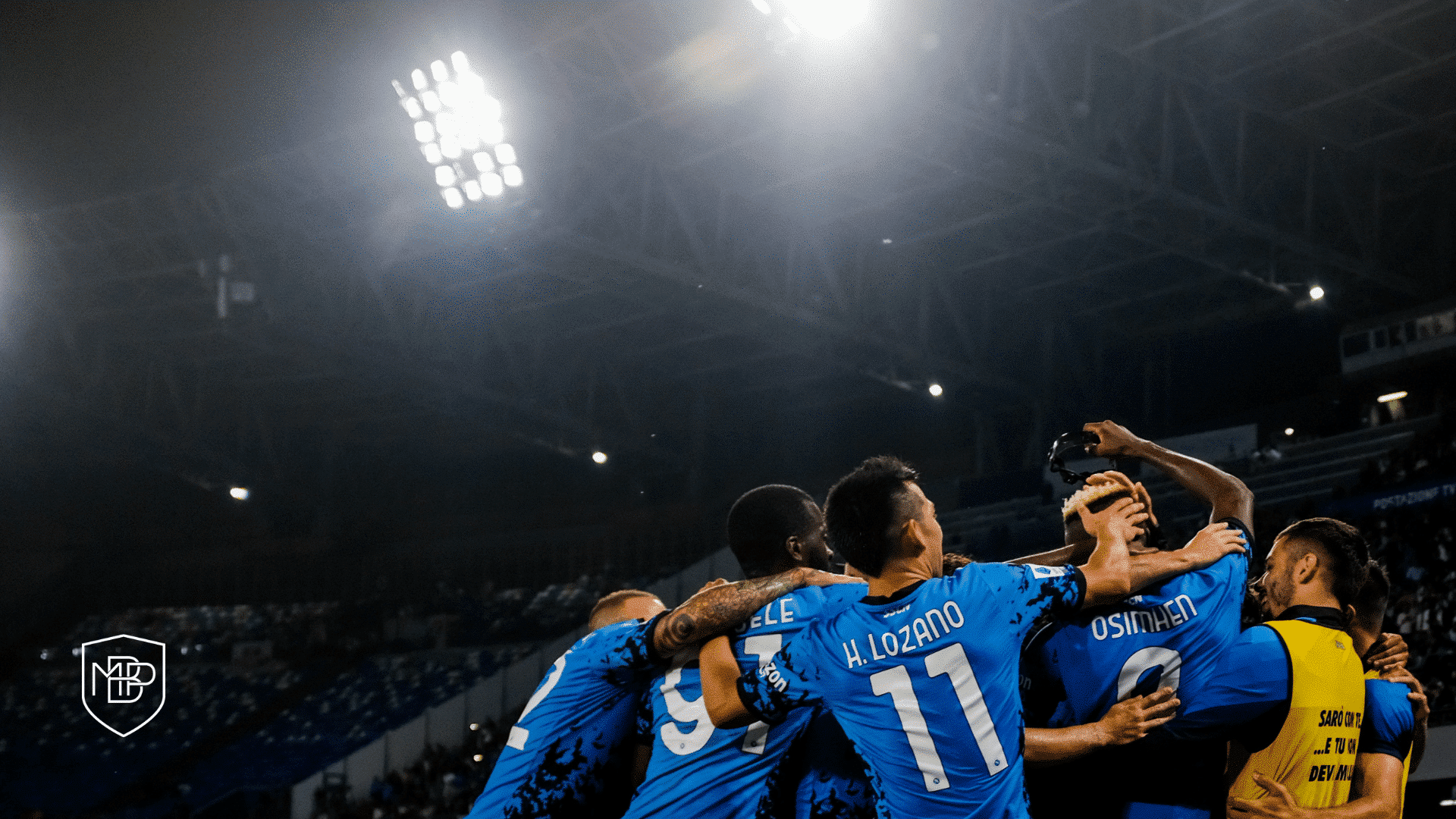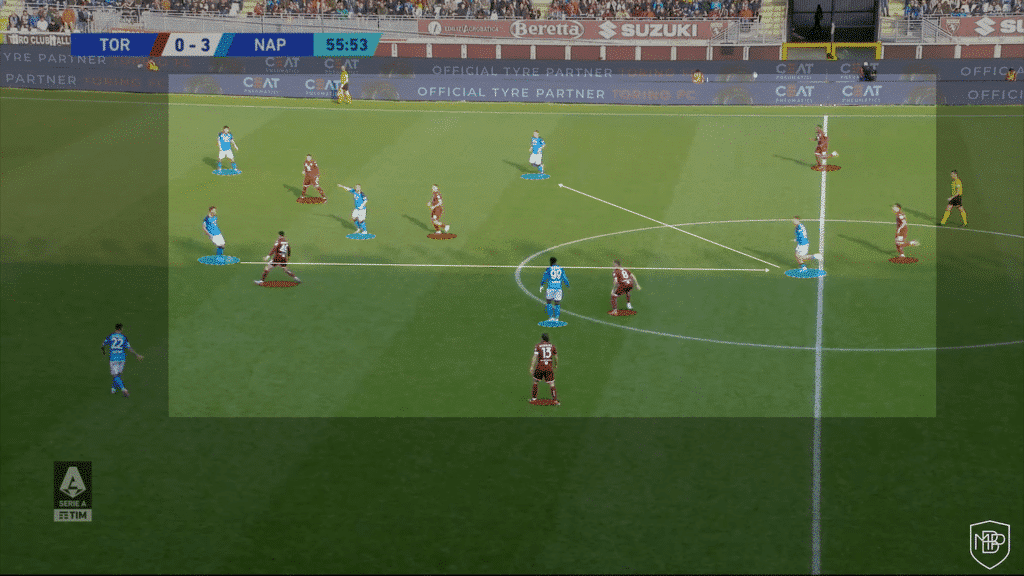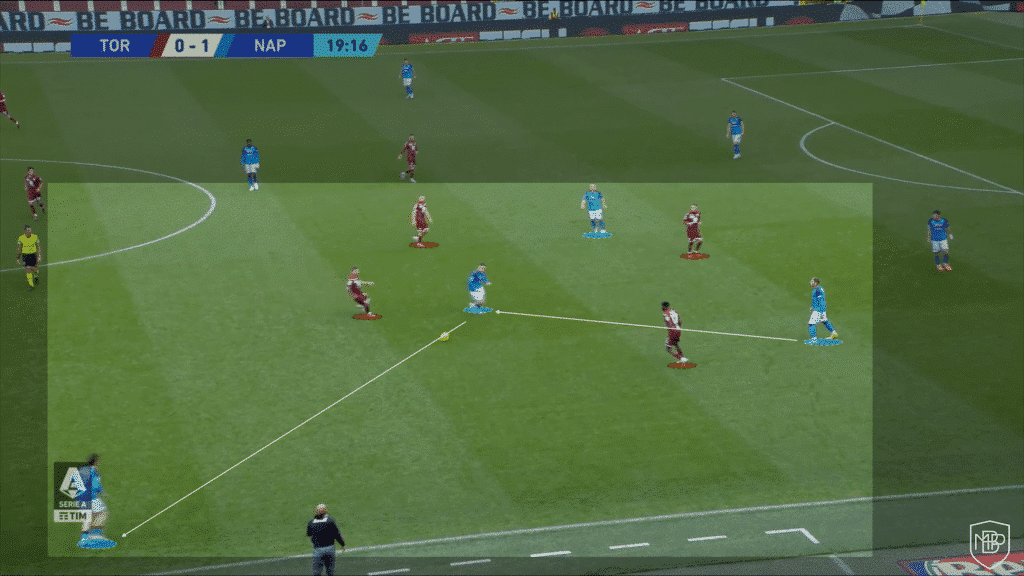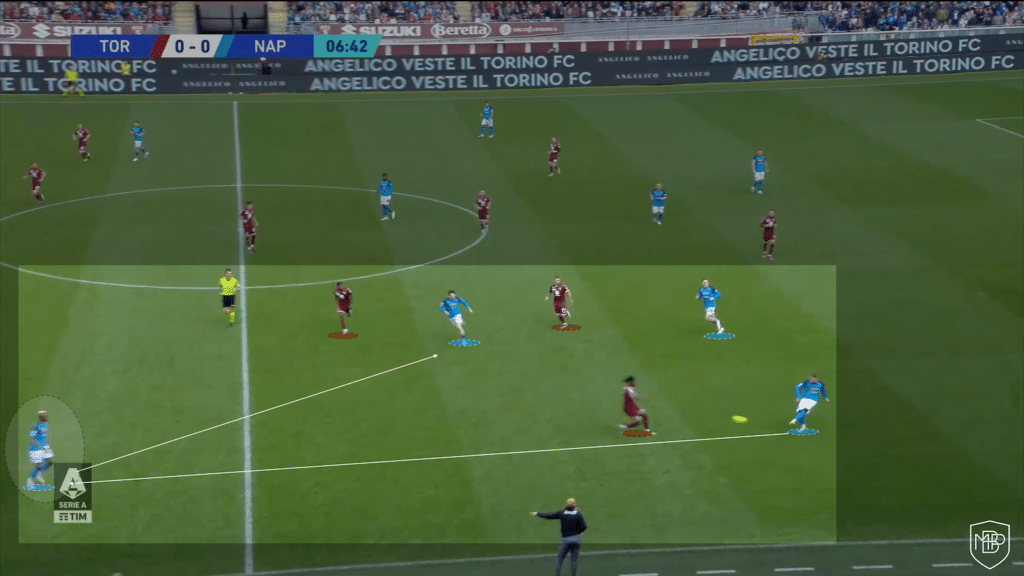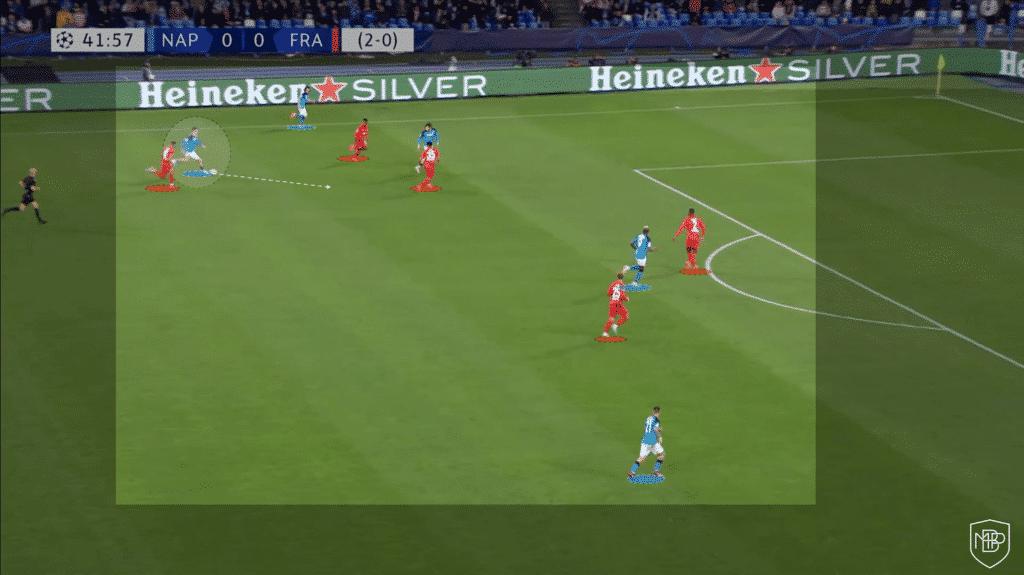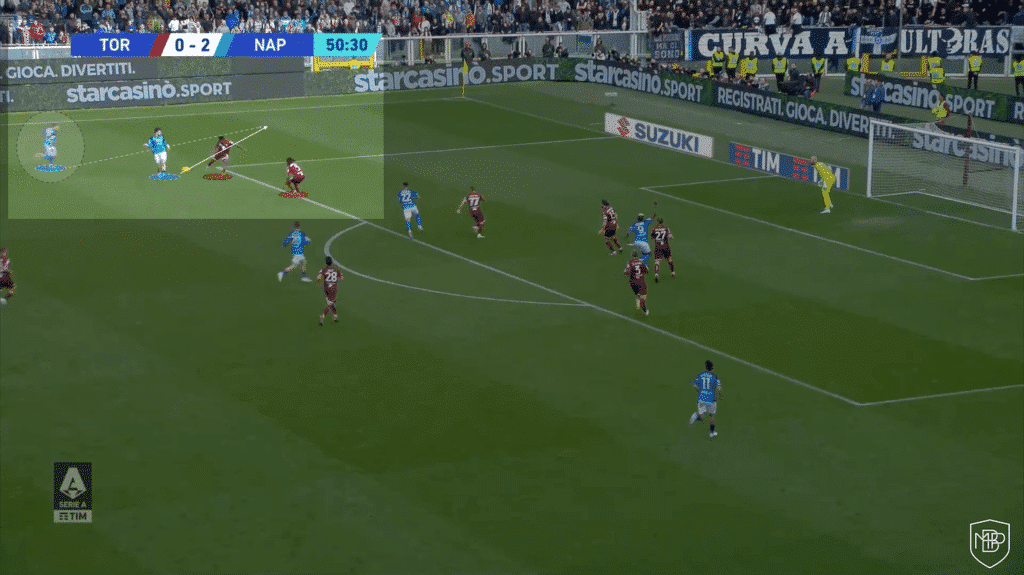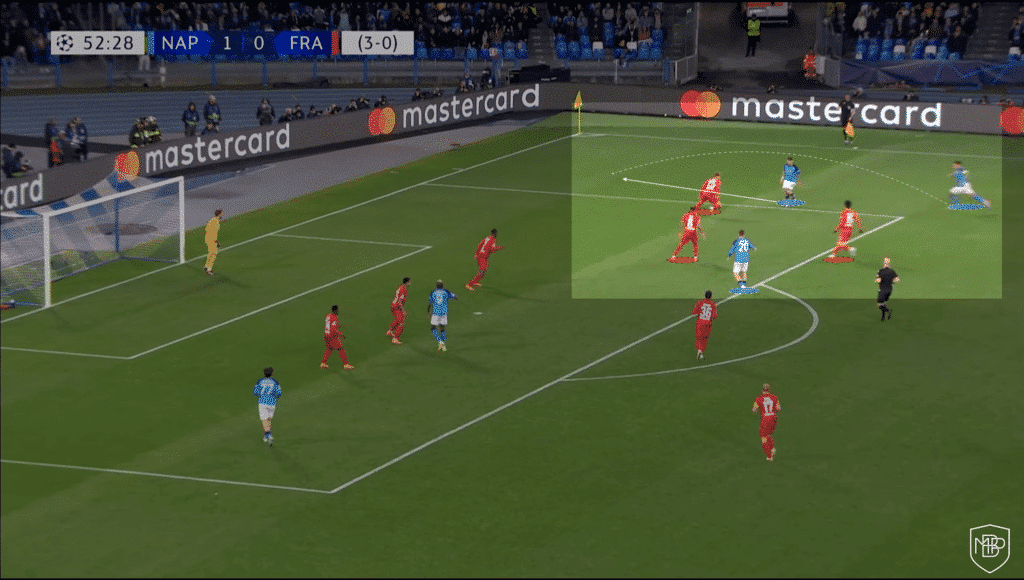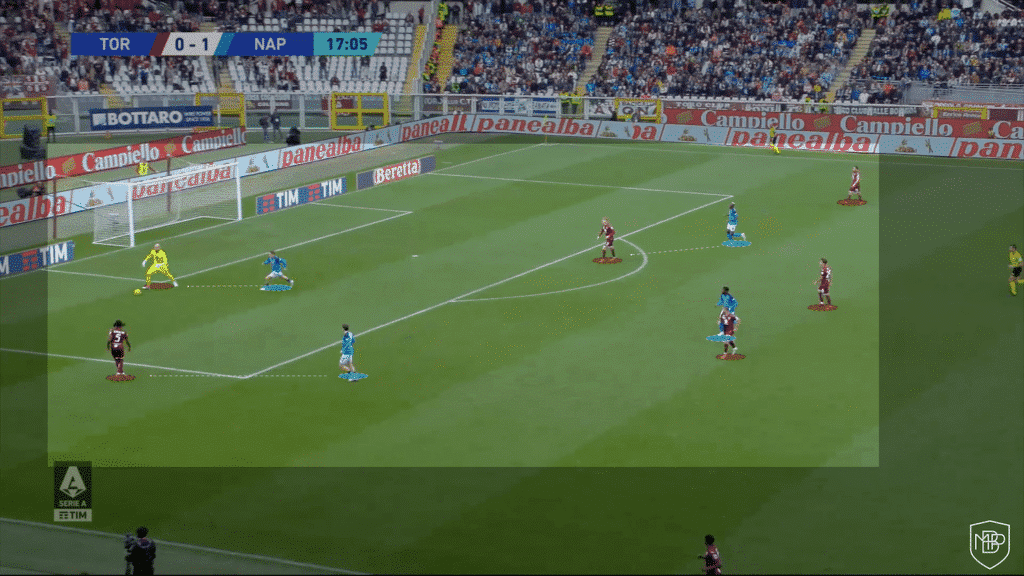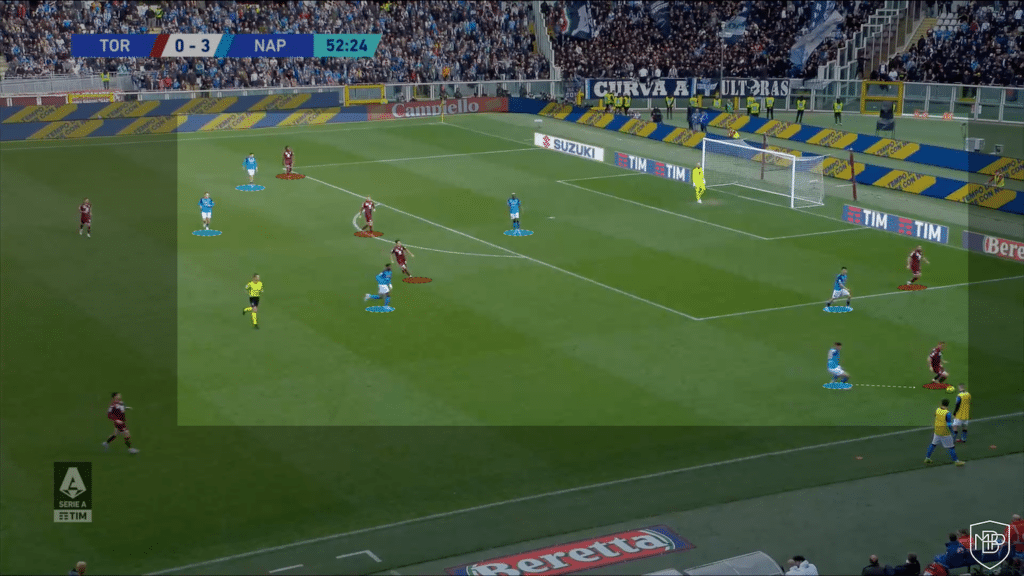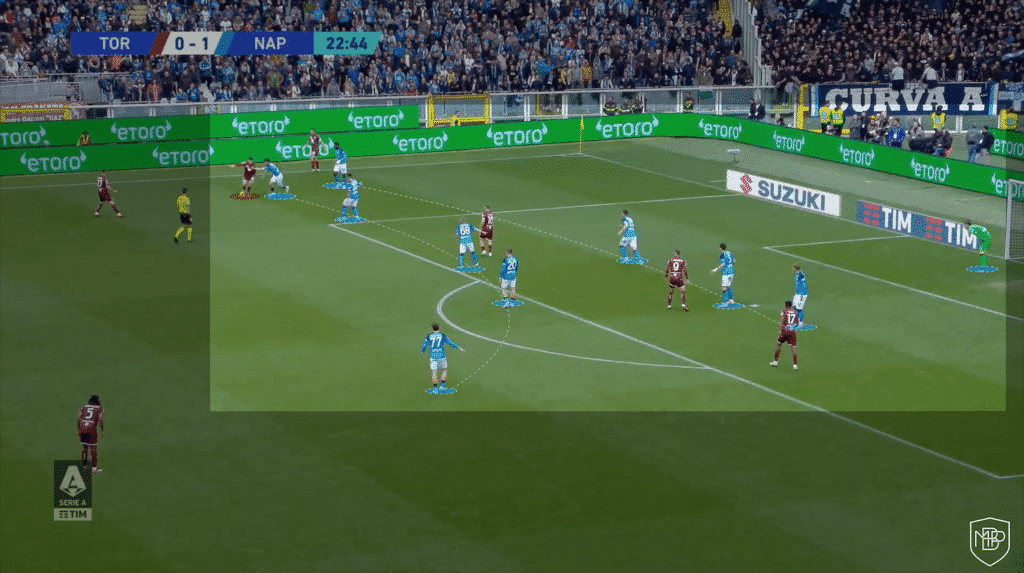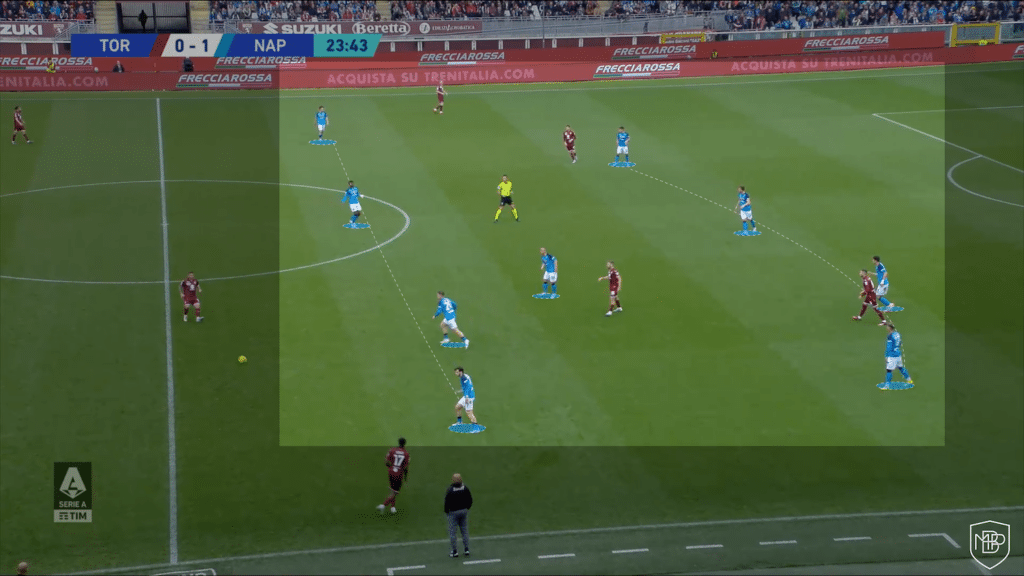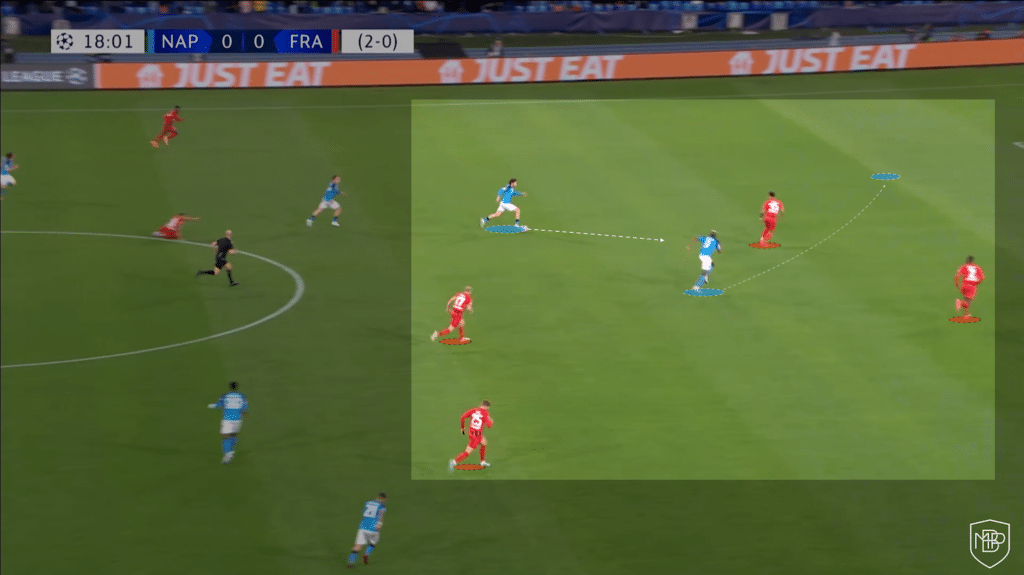SSC Napoli are enjoying a historic season. With a 19-point lead over second-placed Lazio, and in the quarter-finals of the UEFA Champions League, the Neapolitans are setting themselves no limits.
To win the Scudetto 33 years after their last one would be historic. However, the good play shown throughout the year, and the excellent individual level of certain players, have made the team clear favourites to win the Champions League.
Therefore, at the MBP School of Coaches, we will explain the three tactical concepts that stand out the most in the Italian team.
Tactical analysis
Attract, free up, play through
Luciano Spalletti’s side has a very well-defined game model in the different phases and moments of the game. One of the most prominent phases is the attacking phase.
Napoli look to execute an associative game through three general principles: guaranteeing the triple threat (width, depth and intervals), attacking mobility, and attacking unity.
Through these general behaviours, the team seek to generate numerical advantage situations in static and dynamic build-up moments.
To do this, Spalleti employs his team to use the 3rd man. Through this behaviour, they manage to generate an initial advantageous situation, in turn managing to break the opposing line of pressure.
However, in situations where the opposition succeed in counteracting their initial behaviour, the Gli Azzurri have different resources to solve the ‘problem’. One of them is the execution of the line fundamental of ‘making second line passes to avoid the opponent’s pressure and/or to take the space behind their back’.
Through the figure of Osimhen, Napoli are able to play with the second line and then play to the free man and look for progression in the play.
Once they manage to overcome the first opposition pressure, one of the Neapolitan trademarks is their verticality in the 3/4 zone – especially in situations of spatial advantage.
To this end, the figure of their forwards is vital. They all share a number of characteristics that facilitate the team’s behavioural principles in the opposition’s half.
Osimhen, Lozano, Kvaratskhelia, among others, have great individual technique. In addition, they also excel in the conditional aspect, especially in their speed of movement.
Thanks to this, the principle is more attainable. In addition, all of them have shown a very high socio-affective structure. This factor has boosted the individual and collective value of all of them to excellent levels through the interactions that take place.
Likewise, the role of the full backs is extremely important in the moments of attacking the final 3rd and the box. The two theoretical starters, Di Lorenzo and Mário Rui, are very attacking. Both tend to push forward in the final third, overlapping the wingers, thus guaranteeing their team’s attacking width, and offering a passing option so that they can then be in charge of loading the area with crosses from zones B or C.
Defensive ambition
The Neapolitans are one of the most defensively complete sides in Europe.
As well as prioritising defence through ball possession, Spalletti’s team have also shown they know how to defend without the ball.
With a generalised idea of recovering the ball as quickly as possible, the Gli Azzurri have mastered a series of methods to achieve this objective.
The first of these is high pressing. As can be seen in the images below, the league leaders look to steal the ball in their opponents’ half by matching up 1vs1 in the zone of intervention.
If they fail to win the ball back initially, the team then force their opponents to play long in order to contest the ball in the air and try to win the second ball through players such as Zielinski, Lobotka or Min-jae Kim.
On the other hand, when playing against more ball-dominant teams, Spalletti’s side also know how to defend low. In this type of scenario, the Neapolitans break up their block by creating a 10+1 sub-block, structured in GK-4-1-4+(1).
In this way, they aim to have a first passing line in depth after recovering the ball that allows them to be able to launch a defence-attack transition.
Khvicha Kvaratskhelia and Victor Osimhen as differential factors
SSC Napoli have in the winger and the striker the team’s benchmark players. Both have emerged as the differential elements in Spalleti’s team.
The two have largely conditioned the way Napoli play offensively (explained in the first point), as both stand out in situations of spatial advantage, being almost undefendable thanks to their speed of movement and ability in 1v1 scenarios.
Through the execution of different fundamentals such as orienting the body to initiate forward actions in progression, not stopping once the advantage is achieved in the action and looking for a game in vertical progression in attack, the two players manage to verticalise the Napoli attacks and strengthen the different principles of play to be applied in the opponent’s half.
On the other hand, the number of goals and assists by both players reflect the excellent performance.
So far, Victor Osimhen has 25 goals and 5 assists. Khvicha Kvaratskhelia has 14 goals and 16 assists in all competitions.
Conclusion
Without a doubt, Luciano Spalletti’s SSC Napoli have had a formidable season. His way of playing through a very defined game model and boosted by the marvellous players he has, is setting trends all over the world.

